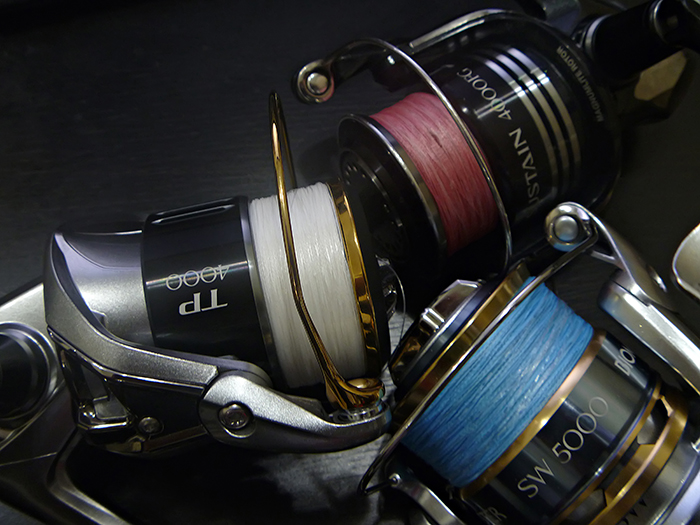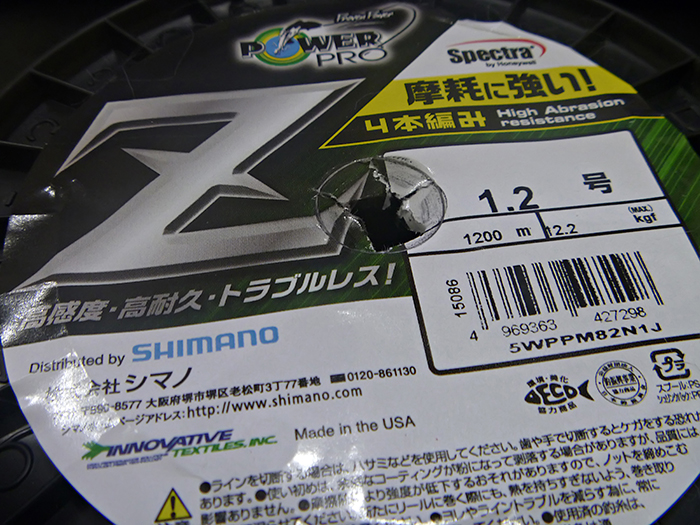This coming season, I will be changing things a bit with the tackle I will be using and will more often than not; fish from shore more than I would with the Porta-Bote or Redbird. There are a lot of areas to explore in and around the United Arab Emirates and with that, I’m going back to basics – rock hopping, shore fishing and long road trips!
This was the type of fishing I was doing when I first moved to Dubai and I have to admit, after a few years paddling around and walking flats, it’s really a refreshing break to be back to the basics.
This year however, we will be doing a few things a little differently. The rods we use to fish the rocks are rods designed specifically for this type of fishing. There are quite a few variables to consider in this type of fishing – Weight is your enemy. The lighter your gear, the more you would be able to sustain this type of fishing longer. The weight of your rod and reel should be put into consideration because it will make you last longer – casting heavy lures long distances with heavy gear will wear you down faster than you think. With that in mind, we are looking at rods and reels that are towards the top end of the scale – bad news for most of us.
Rods
Since long casts are almost always the order of the day, the rods we use are long – 290cm at the very least and some as long as 335cm. These rods are designed to cast small heavy lures to distances in excess of 150 metres. While shore jigging and light shore jigging are not in any means a new way of fishing, the equipment have gone a long way and there are now whole systems dedicated to this type of fishing, refined and further honed by the Japanese who are the main proponents of this style of fishing.

The higher you go up the cost ladder, the lighter and stronger they are – take it from me, buy the lightest and longest rod you can afford. Andalways choose the one that doesn’t have an obscure brand to avoid heartaches – there is nothing worse than starting your fishing and have your main rod break on you on your 5th cast.
Some good brands are Yamaga, Majorcraft, Tenryu and Palms.
Reels
I’ve never really considered the weight of the reel as a factor before, yet, it became evident with this type of fishing because you have to be absolutely mobile. You hop from rock to rock and you move around a lot while casting, then its cast after cast after cast. Some of my old school reels were just a tad too heavy, so I had to get some reels to make me last longer. You also have to consider that the fish you’re targeting aren’t really small fish so the reels have to be up to the task – Reels that are in the level of Shimano’s Stella, Twin Power, Sustain or at the very least, Biomaster are the reels to look for, they are light, sturdy and more importantly, they have the drag to stop hard running fish.
Lines
The lines we use are pretty thin, again, to maximize casting distance. General type braid is good enough, however, to make casting more efficient, there are braids specifically produced for casting, more often than not, they are thinner and smoother than braids used for jigging – the rough texture of some braids create friction that slows your cast down – this is why casting braids are almost always very slick and don’t create a lot of drag with the guides. There are a lot available, from top end brands like Varivas to the relatively low cost JDM Powerpro.
Lures
You can get pretty creative with this – we basically chuck everything out there – from sinking stickbaits to jigs of all shapes and sizes, remember not to overload your rod and always check the casting weight rated on the rod, overloading these rods will snap them and will be quite a costly experiment on your side.
Leaders
When you do find a spot and have already determined what swims there, the next decision you will have to tackle is the leader – we have found some spots that let us get away with just a mono or fluorocarbon leader, however, there are some spots that require the use of wire. We have been losing a lot of lures lately. Although wire is sometimes needed, when you explore a new area, it’s always a good idea to go with a straight fluorocarbon leader and get more strikes to know what you’re up against. Wire is so visible that most of the time your strike rate will be pretty low when you have a length tied on. It’s a tough call to make sometimes, but as a matter of preference, we almost always go with straight fluorocarbon leaders when we first wet lines in a new spot, even if there is a risk of encountering toothy fish. When you do this type of fishing and exploration, lures should be considered as consumables, it gets expensive, but like most types of fishing that aren’t too popular, it’s a fun learning process.

Lightweight Heavyweights
My main combos are a Majorcraft 290cm rod paired with a Twin Power 4000 – the combo with the light is about 430 grams total. My heavier combo is a Yamaga 295cm rod paired with a Biomaster 5000 – it weighs in at an even 500 grams. Although the reels are quite small for a lot of people’s taste, you would be surprised at what kind of fish it can pull. This method is by no means a method for small fish and when you finally get that strike, you would be thankful that the tiny expensive reel you have on the rod are equipped with the brakes to stop them.
Casting Out
This is not the end all of shore fishing by any means, just as anything else, it’s really just another way of trying to catch fish. As with most methods, it has its good days and it also has its share of bad days. For now, this is what we find most challenging and most entertaining and we will stick by it until we get bored or find something else to do.
Do it at your own risk (mostly a risk for your wallet). If you find success with this method, send me an email, I would love to see what you’ve caught!
Till next tide,
Kit
Words + Photos By: Kit Belen

